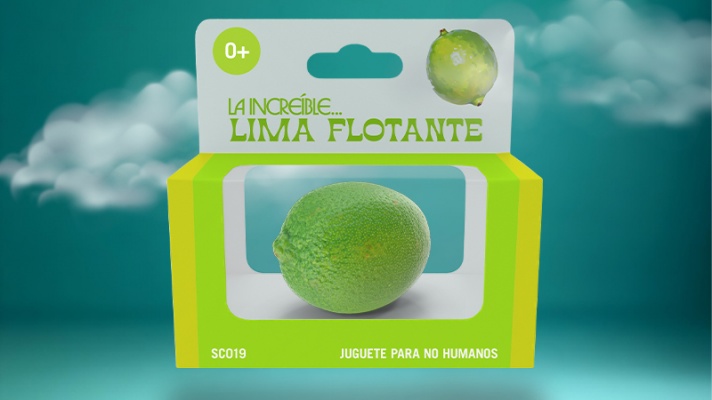Descripción de la Exposición
The exhibition is titled "Un-Understandable: on Maize, Natives, Genocides and Ecocides," and aims to analyze how the diversity that the maize plant has undergone over several centuries is due to an indigenous mutualism made up of exchanges that transcend market and profit motivations and which has been jeopardized by the late agroindustry monopolist strategies.
Through a video around a 6,000-year-old corn fossil, two agronomists and a geneticist talk about past Mexican communal experiences in campesino and native cultures. In a series of black-and-white photographs, 11 different varieties of teocintle (the primitive plant from which maize is created) are documented and serve to mark the different chapters in TIEMPO MUERTO #5a, which concentrates its editorial activity around experiences dating back to the second half of the 19th century, when indigenous Mexican mutualism and European anarchist thought encounter setting the basis for the Mexican Revolution.
The works on this show were produced on occasion of The Second Yinchuan Biennale: Starting from the Desert: Ecologies on the Edge (2018) curated by Marco Scotini. Only one censored work in that context is now available to the public for the first time.
Juan Pablo Macías
Juan Pablo Macías was born in 1974 in Puebla (MEX), he lives and works in Livorno, Italy.
In editorial projects, poetry, installations, performances, video, text, and photographs, Juan Pablo Macías investigates systems of representation and affectivity. His research-oriented work often considers the specific history of anarchism as a critique of representation, contrasting authoritative hegemonic knowledge to the often-hidden or repressed insurrectional knowledge passed between marginalized communities and activist networks. He is editor in chief of TIEMPO MUERTO journal (2012- ongoing) and WORD+MOIST PRESS (2014-ongoing), two editorial projects on anarchism and libertarian thought. Using the anarchist logic of expropriation, these publications draw from the unique resources available in contemporary art institutions and foundations to bring this information to light (using public resources to make information public), and often are accompanied with conceptually oriented works by the artist. (Post Brothers).
Since 2009, he has been collecting digitized books on anarchism. Downloaded through the Internet, Biblioteca de Anarquismo y Anarquistas (2009-ongoing), is a growing collection that has been a research resource for his editorial projects, a sculpture, and an immaterial collection of documents to pass on to others. As Marco Trulli writes: Macías' radical thought finds its most appropriate home in publishing production, a true instrument of sharing and dissemination of insurrectional knowledge and archives that the Mexican artist intends to valorize according to a concept of expanded publishing, which from books overflows onto his body through tattoos, or through inscriptions he makes with tips of all kinds on walls or plants. With respect to books, often produced by 'diverting' money from the art system, the artist is reflecting in a more structured way on the systems of dissemination and distribution of publications, with the intention of socializing anarchist thought through what is a great relational and discursive architecture of practices, thoughts and research. A practice that defines a map of possible alternatives to an art system in which production processes construct contradictory dynamics that are too often allied with liberalist policies.
Another important aspect of his work is the one dealing with seeds. In 2014, he ideated BAS (Banca Autonoma di Sementi Libere da Usura) in Abruzzo, which is a seed bank free from usury that brings together libertarian words and seeds as two important foundations of life, understood as a symbiotic relation that has shaped Earth.
Production, distribution and consumption are also addressed in Salvator Rosa gallery. Around 2013, Macías conceived the idea of a commercial art gallery without a gallerist (the nacheinander), and in 2018, along with other artists, Salvator Rosa was activated. Trulli adds, Salvator Rosa is a collaborative project by which the artist rethinks the economic conditions and relationships in the art market. In addition, this project negates a whole range of traditional aspects of event communication and marketing dictated by the art system and the cultural industry by communicating and narrating events even after they have taken place.
He has been active as a curator since the beginning of his career at Museo de Arte de Tlaxcala (2003), Sala de Arte Publico Siqueiros in Mexico City (2005), and independently, he has curated several projects like Plataforma 00 Biennale in Puebla (2006), Separation Perfected at National Center for Contemporary Art Moscow (2007), Prague Biennale 04 (2009), and since 2015, he has been curating along Alessandra Poggianti, the program of Carico Massimo association in Livorno, as well, the online platform ON AIR (2020).
His work has been shown in Musée d’Art Moderne de la Ville de Paris, Casino Luxembourg, Maison Rouge Paris, Confort Moderne Poitiers, Concordia’s 4th Space in Montreal, Villa Romana Florence, tranzitdisplay in Prague, National Center for Contemporary Art in Moscow. In Mexico City at Museo Universitario de Arte Contemporáneo (MUAC), Museo de Arte Moderno (MAM), MUCA, Museo Carrillo Gil, Museo Ex Teresa Arte Actual, Sala de Arte Publico Siqueiros (SAPS), Museo Amparo in Puebla. He was part of Istanbul, Jakarta and Second Yinchuan Biennials and a resident at Fondazione Ratti in Como, Database in Carrara, Guilmi Art Project in Abruzzo, La Stanza della Seta in Sicily, Thread from the Josef and Anni Albers Foundation in Senegal, and more recently, at Arthur Cravan Foundation in Milan. His works are in several public and private collections, like Collection Centre Pompidou, Paris (FR), Colección Museo Amparo, Puebla (MX), Colección Adrastus, Arévalo (ES), Collezione Taurisano, Napoli (IT), Collezione La Gaia, Busca (IT), Collezione Nomas Foundation, Rome (IT) between others.

Exposición. 16 abr de 2025 - 11 may de 2025 / Centro Botín / Santander, Cantabria, España

Formación. 08 may de 2025 - 17 may de 2025 / Museo Nacional Centro de Arte Reina Sofía (MNCARS) / Madrid, España